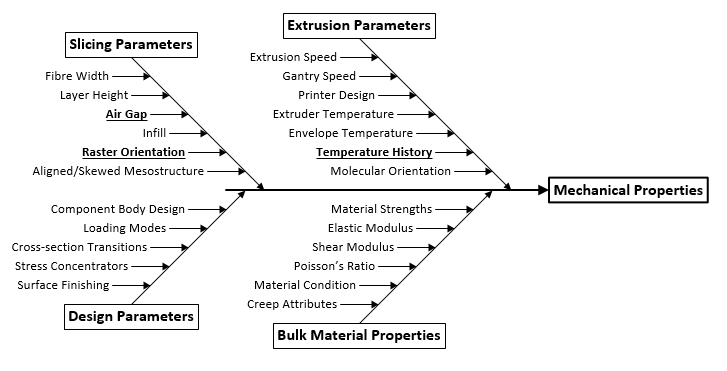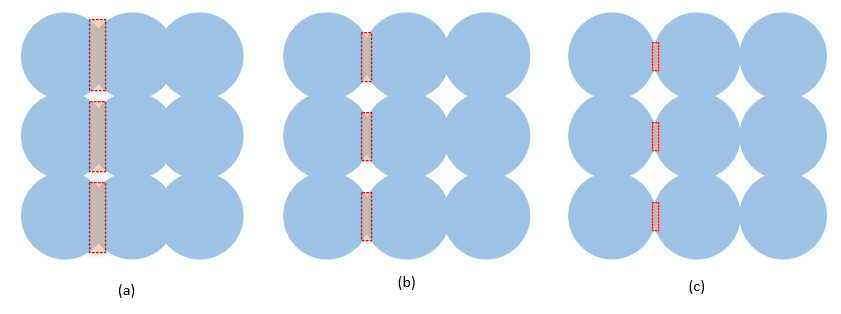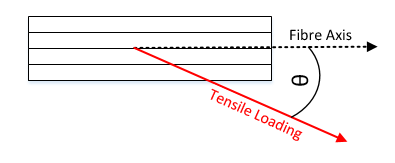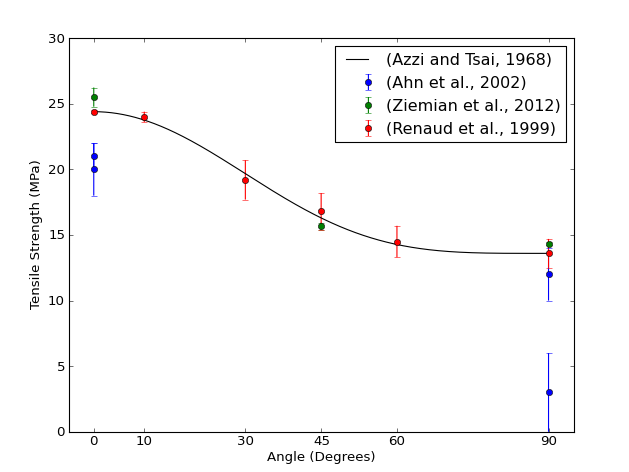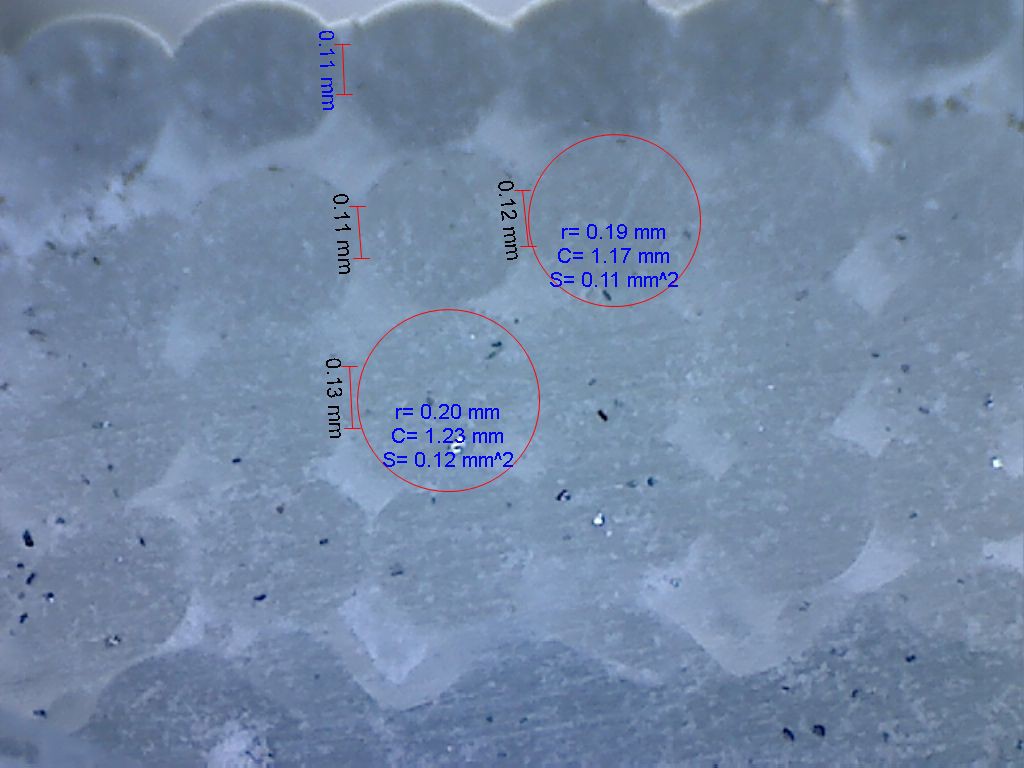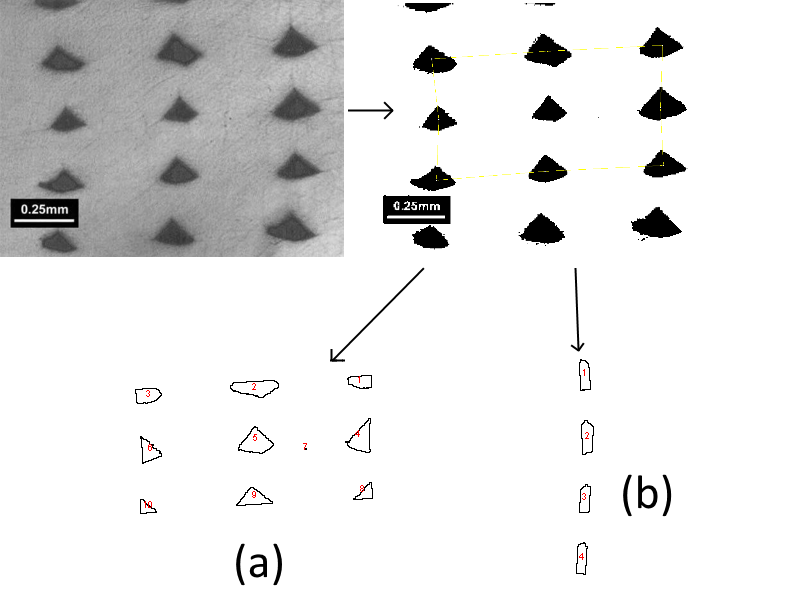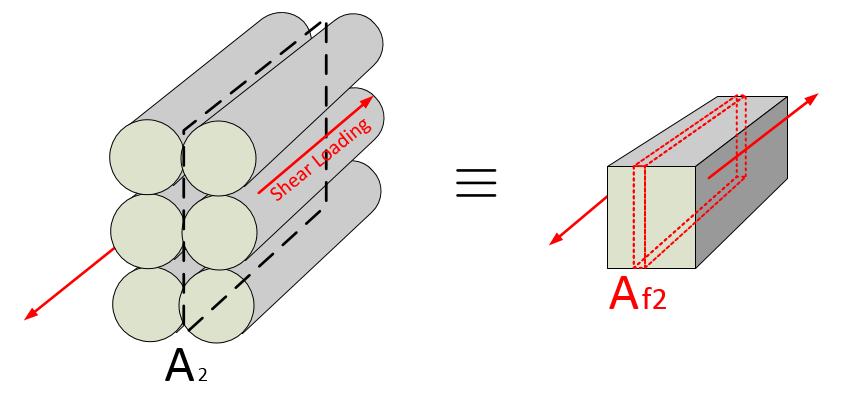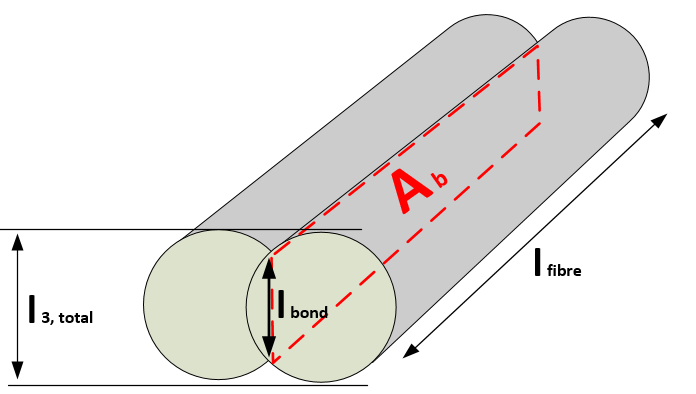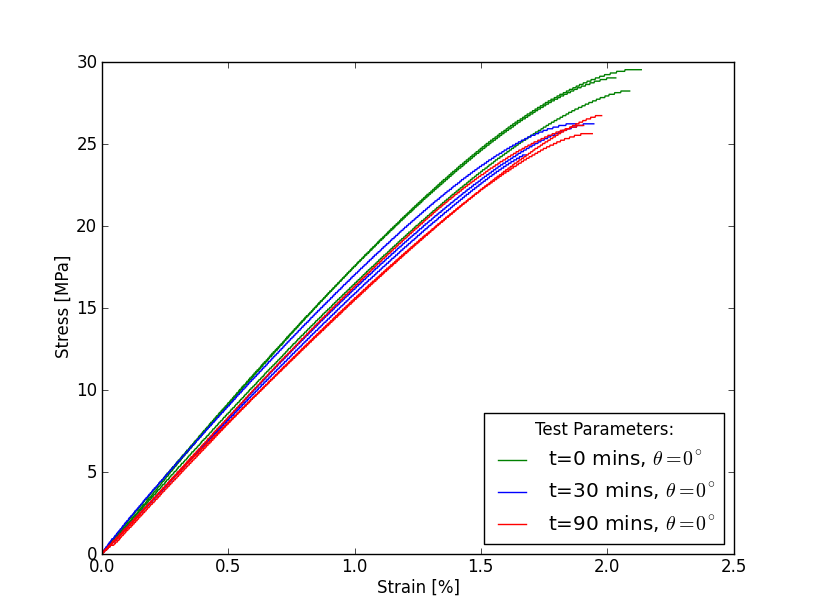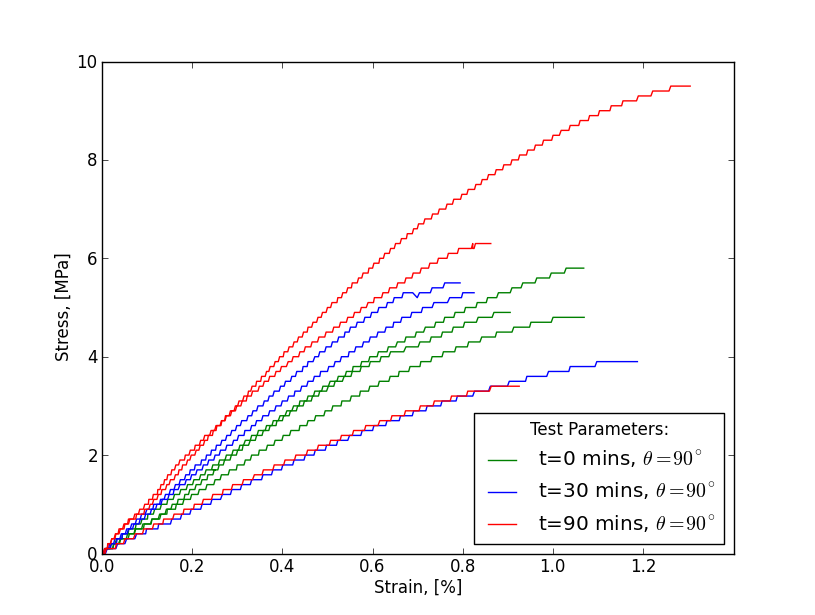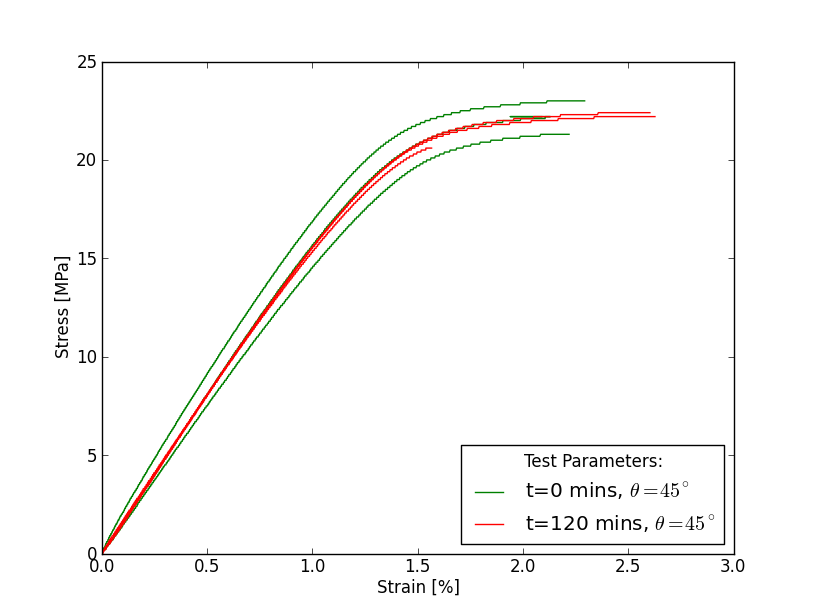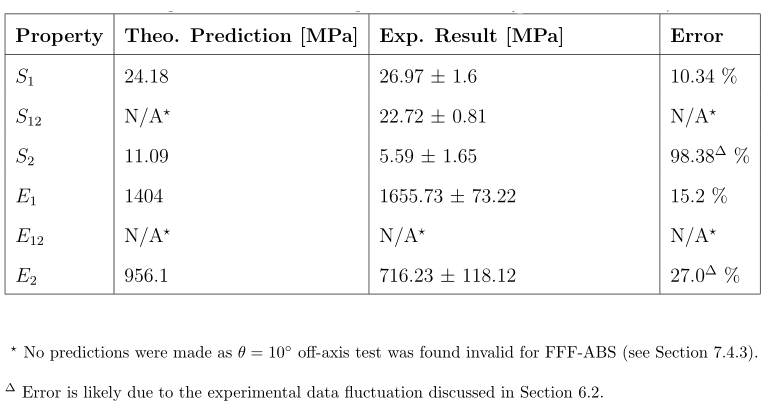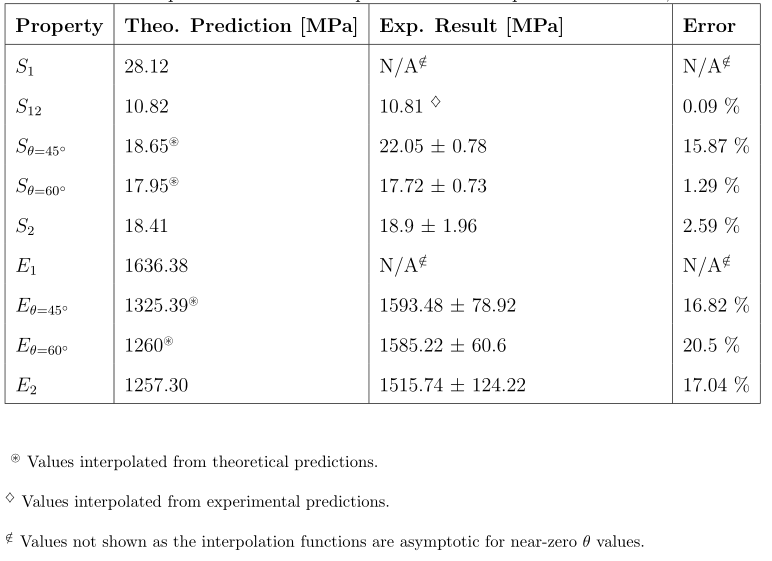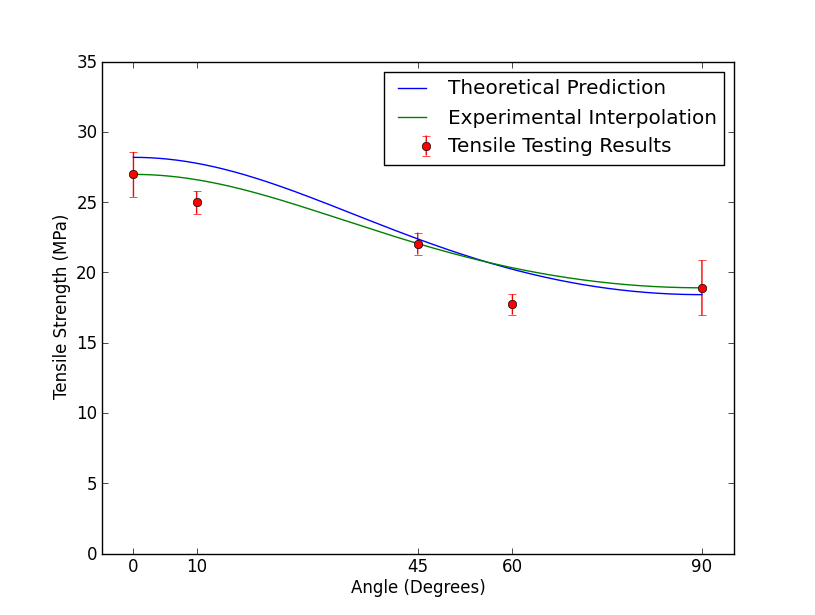-
Influential factors on material strength
07/03/2016 at 08:09 • 0 commentsResearch conducted during the project found that the material strength is a strong function of several controllable factors:
Of these, the underlined parameters were varied to determine their influence on the mechanical strength:
Air Gap:
Defined as the distance between adjacent extruded fibres. For example, if adjacent fibres of width 0.4 mm are deposited with 0.36 mm axis to axis distance, the air gap is -0.04 mm. Setting a negative air gap in this manner will increase the transverse and intralaminar shear strength of the print, as the air gap directly alters the bond area between adjacent fibres. Figure above shows decreasing bonding area with increasing air gap.
Raster Angle:
Raster angle is simply the angle between the loading direction and the fibre axis. The plot below shows a meta-analysis confirming that tensile strength is a strong function of raster angle:
Temperature History:
Early in the project, it was predicted that the interfibre bonding strength could be increased by annealing the printed tensile test coupons. The temperature histories were varied in time duration (0,30,90,120) at 125 deg C.
Basically, this doesn't work: the specimens shrink when annealed, and there wasn't any observable increase in shear strength. My (untested) hypothesis is that annealing would make the material strengths more consistent (but not greater) as the bond areas between the fibres would be more consistent - however this would likely not be worth the considerable part shrinkage.Controlled Build Parameters
The build parameters in the table below were held constant throughout the experiment.
Parameter Value Printer Solidoodle 3 Filament Chi Mei Polylac PA-747 ABS
Density 1.03 g/cc
Melt Flow Rate 13g/10mins (load 10kg, temp 220C, ISO-1133)
Yield Tensile Strength 31.0 MPa
Stored with dessicant in cool dark area
Natural colour (no composition-altering colourants)Layer Height 0.4 mm Air Gap -0.04 mm (10% of layer height) Infill Unidirectional Rectilinear Infill Mesostructure Aligned (ie. not skewed) Extrusion Speed 2700 mm/min Extruder Temp. 210 deg C Envelope Temp. 70 deg C Test Coupon ASTM D3039
185mm x 25mm x 2mmTensile Tester Instron 5500R Tensile Testing Machine
Single axis loading with attached extensiometer -
Modelling the material strength
07/03/2016 at 08:09 • 0 commentsNote: To save pages of mathematical formulae and reasoning, derivations and full explanations are not reproduced here. See the attached research notebook files for full details of the analysis.
Simplifying assumptions allowed representing material stiffness matrix from the 36-parameter fully-anisotropic state to the much simpler case of transverse isotropy.
The following models use measurements of the cross-sectional properties of the produced specimen to predict the mechanical strength - meaning the mechanical strength can be predicted using only a cheap USB microscope!
Using a cheap USB microscope to measure the material bonding lengths and bonding area.
A freely available program such as ImageJ can then be used to find the void density of the material as shown below. The void density, the ratio of air volume to the final part volume, is an important measure and can be used to predict the mechanical properties as discussed below.
Composite Strength Modelling
As derived in the attached research notebook, the multiaxial failure criterion was selected for predicting failure of the specimen. First, some notation
Longitudinal tensile strength is basically the tensile strength along the fibre; intralaminar shear strength is the strength relevant to shearing between the fibre bonds; transverse tensile strength is the tensile strength across the fibre.
This criterion states that failure occurs when the following equation is satisfied:
In simple terms, this means that all that is required to characterise the strength is the three material strengths. These were found to be easily and accurately predictable from void density measurements.
Longitudinal Tensile Strength
If the void density is measured, the longitudinal tensile strength can simply be approximated by the equation
The subscript 'ty' denotes the material tensile yield strength, which is a property of the bulk material (31.0 MPa for PA-747 ABS).
Intralaminar Shear Strength
To produce a simple model for the intralaminar shear strength, the effective shear-load carrying area was found:
The intralaminar shear strength is simply related to the void density as:
Transverse Tensile Strength
The transverse tensile strength was found to be a function of the interfibre bonding length ratio:
Let
The transverse tensile strength was then found to be a very basic function of this bonding length ratio:
Summary
We have developed a very simple strength model based on cross-sectional measurements.
Calculating these S values means that we can predict loading required to satisfy the multiaxial strength criterion - and thus predict when the material will fail!
-
Testing the developed model
07/03/2016 at 08:08 • 0 commentsNote: Experimental design is discussed at length in the research notebook.
Tensile testing of the produced test coupons showed that the material properties between printed specimens were remarkably similar when loading was along the fibre:
The transverse strengths, however, were not nearly as consistent:
The 45 degree orientation test interestingly showed ductility near the failure region:
Some interesting properties of the FDM material can be observed from the above plots:
- Low strength - transverse strengths above are on the order of 1% of the strength of steel.
- Inconsistent tranverse strength - this is almost certainly due to the inconsistent transverse bonding area causing a 'weakest link' phenomenon.
- Remarkably linear-elastic behaviour until close to the failure point.
Two tensile test sessions gave experimental data for the material tensile/transverse/intralaminar strengths, which were compared to the predictions as below:
Graphing the predicted strength against the experimental data shows reasonable accuracy of the estimation method:
The errors between the prediction and experiment were actually quite small, given that strength prediction of the FDM material has never been done before! This is promising for future work into characterising the properties of FDM material - or perhaps it's simply useful on it's own. Based on the research conducted here, stronger prints can be made by having a more negative air-gap, as interfibre bonding increases.
We can also make rough predictions about the strengths of the printed material - it seems reasonable to assume about 25 MPa tensile strength, 10 MPa intralaminar shear strength and 15 MPa transverse tensile strength for ABS under the same conditions - though definitely conduct your own testing before using these values.
-
Future research and contributions
07/03/2016 at 08:07 • 0 commentsFurther research and contributions can be found in the files attached to this project:
- data.zip - Tensile test data, microscopy images and test coupon images.
- prints.zip - g-code used to print the test samples.
- FDMProperties-report - full report detailing research, methodology and analysis.
- analysis.zip - scripts to automate the analysis calculations.
If you would like to get involved with this project, or have an idea about where to take it, shoot me a message at hackaday!
FDMProperties
Developing a simple, accurate model for the mechanical strength of 3D-printed material.
 Sam Barrett
Sam Barrett